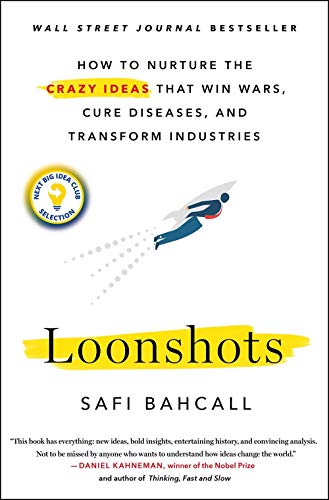Book Review: Loonshots
This book came by recommendation of Soumyadipta. Overall, a very enjoyable book. The basic theory is about how the best ideas that won wars or conquered diseases were rejected for many years as completely lunatic ideas before they got accepted. Hence “Loonshots” (lunatic + moonshots).
The book has some incredible anecdotes and stories. Sometimes though you might get lost in the intrigue of all those stories and lose the basic point of what the author is trying to build up to. I had to go back thru the book and skim it a second time to tie all those points he was making into the overall roadmap he had planned to establish.
Some great case studies of radar, insulin, Apple, Polaroid, Pan Am and such success or failure stories. One very interesting conclusion is that to support really large loonshots, you need the support of government. Nobody has as much money and capacity to digest failures. The author takes us thru the glorious days of American breakthroughs when government and science came together.
You will learn about the magic of power of 2.5. Did you know that a lot of things – e.g. casualties in civil war and the frequencies of them or forest fire size (area) and occurrences are all correlated by a factor of 2.5?
You will also learn how the optimum size of human groups is 150. We naturally tend to congregate in that size. Apparently, the neocortex size and the social group size of all primates follow a fairly strict straight line. And if you extrapolate to homo sapiens neocortex size, you will arrive at 150!!
If you are an organizational leader, there are some thought provoking ideas here – about how to keep an organization viable and productive as it goes thru transitions. The example of molecules of water and ice co-existing at 32 F and freely intermixing is a powerful one.
You will also learn about the power of systems thinking (understanding why we took a decision in the past) versus outcome thinking.
And even if you are not an organizational leader, you will find a lot of Aha! moments in this book.
Now, I have to say that before I picked up this book, I read up the reviews and there were a lot of scathing ones (some sounded very personal). After reading the book, I do not think the author deserves any of that. Certainly, as I mentioned, the diversity of examples and theories the author gets into – and there are lots of them – makes you forget how they relate to the original roadmap but a simple re-read solved that problem for me.
Thumbs up from me.
